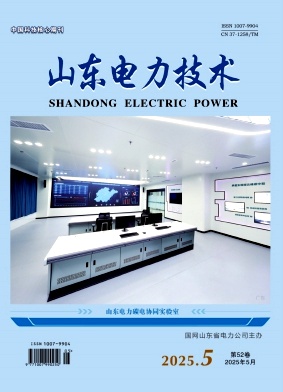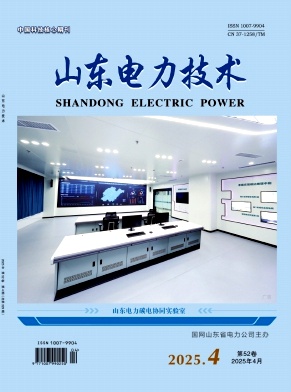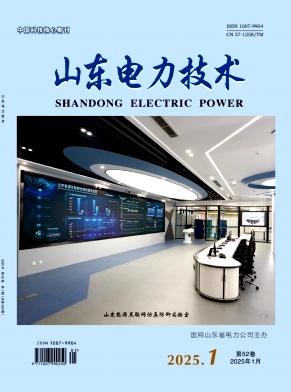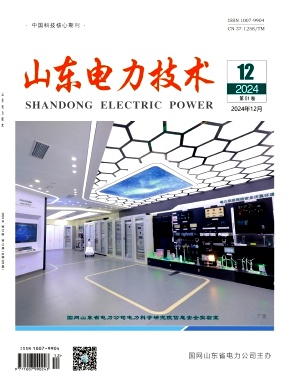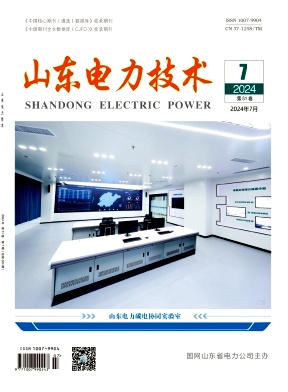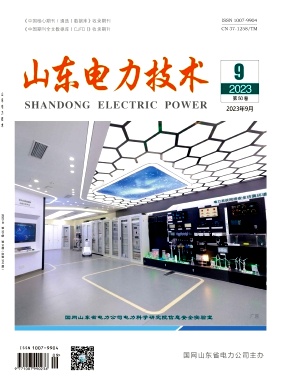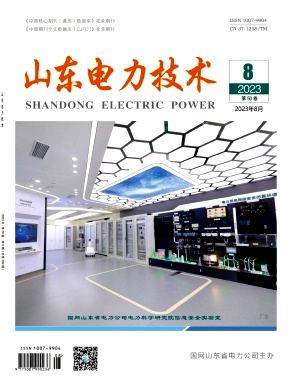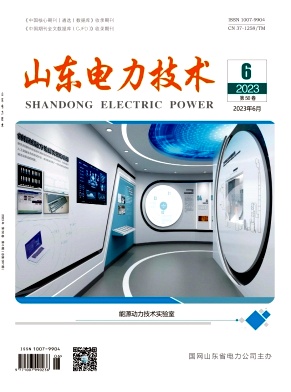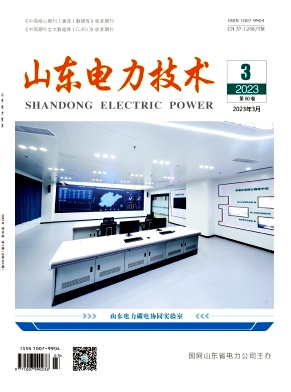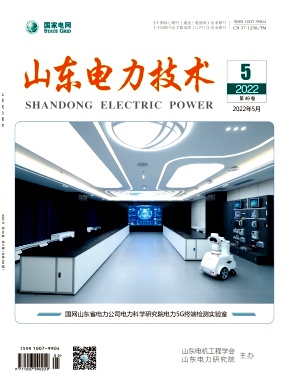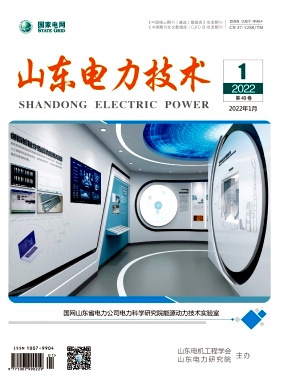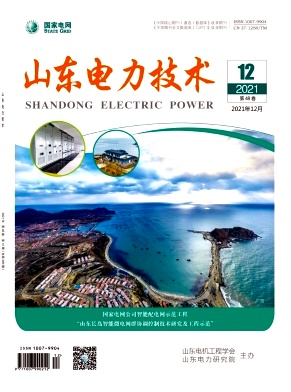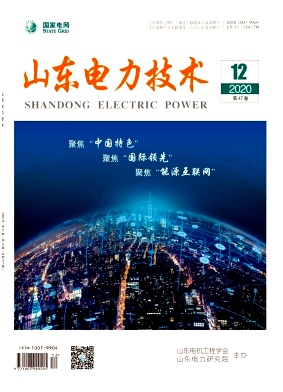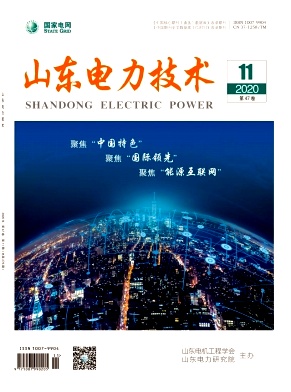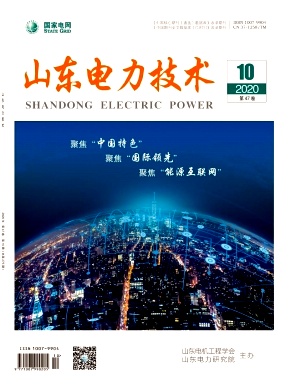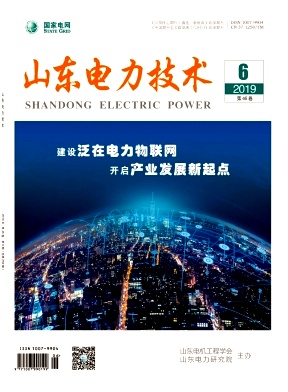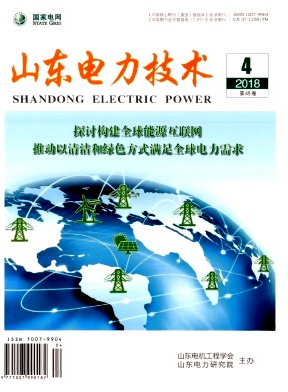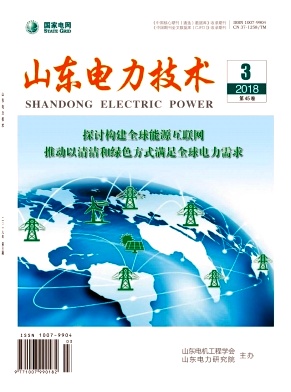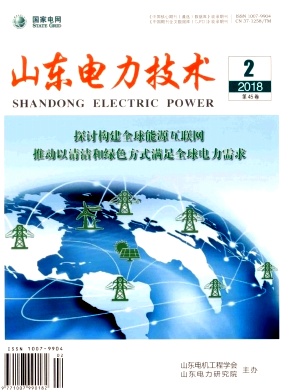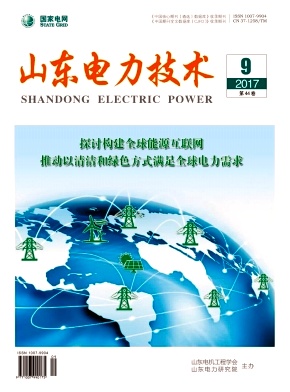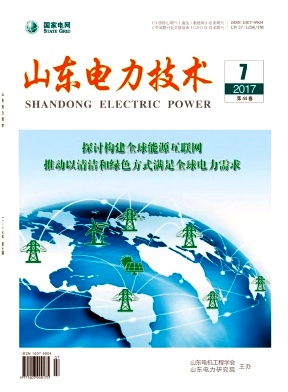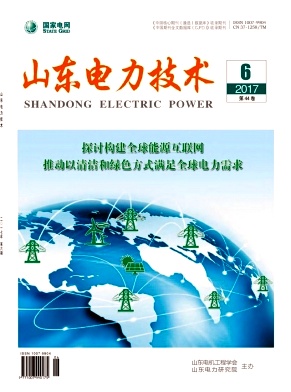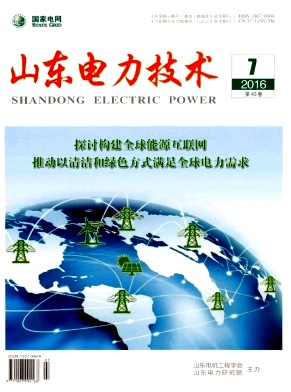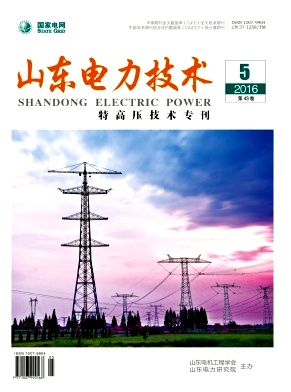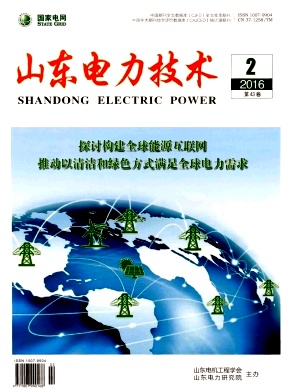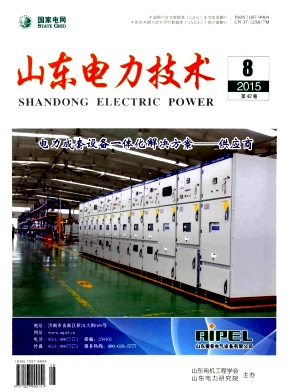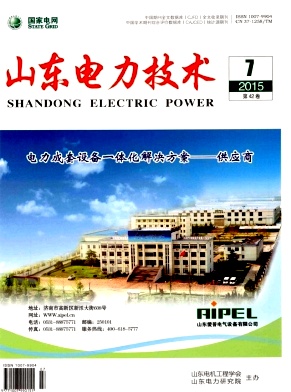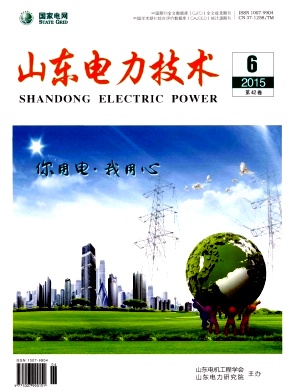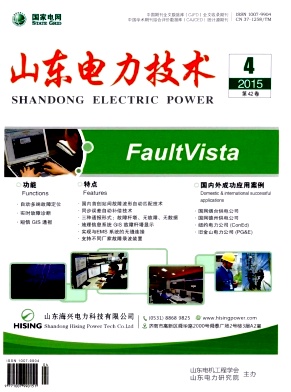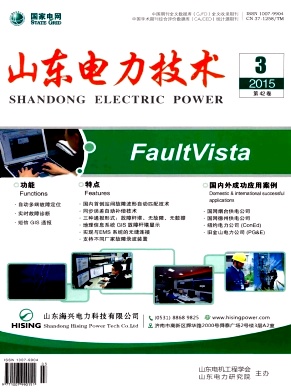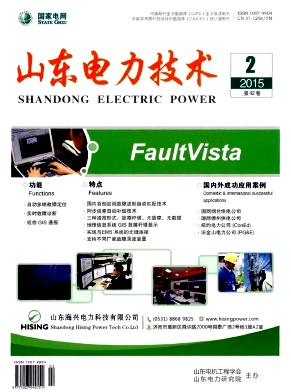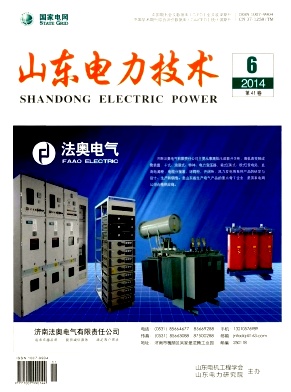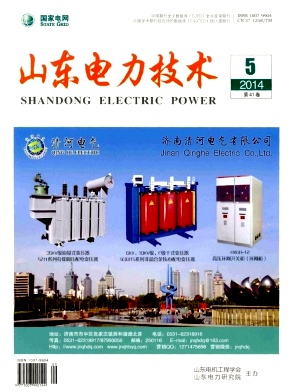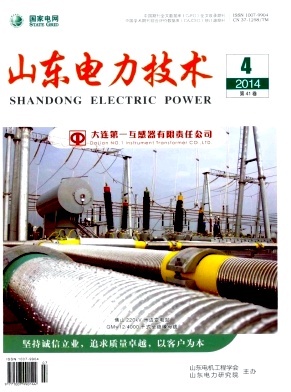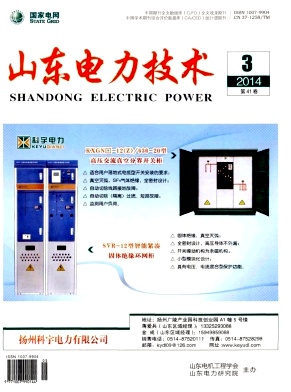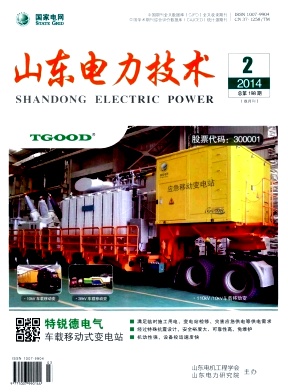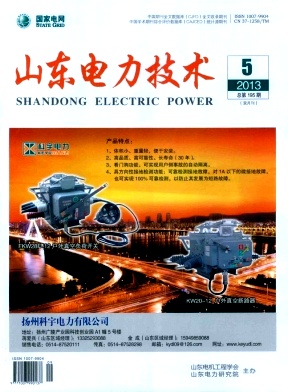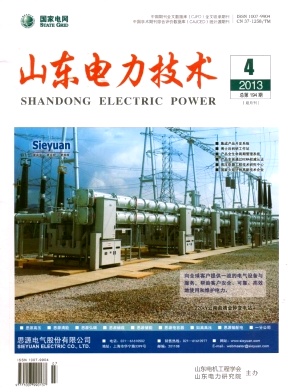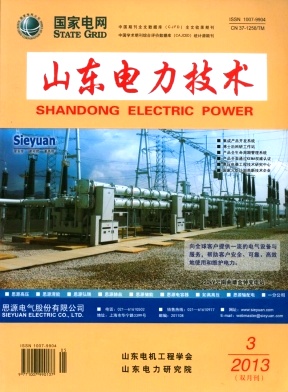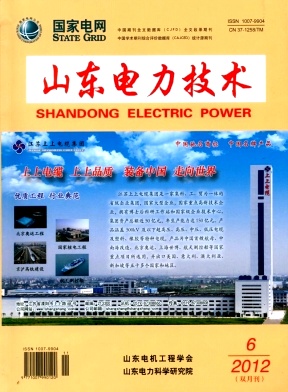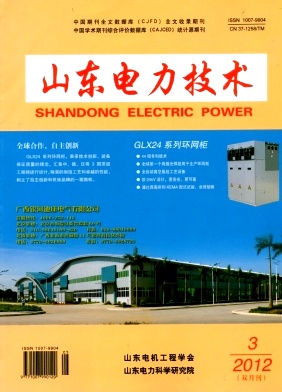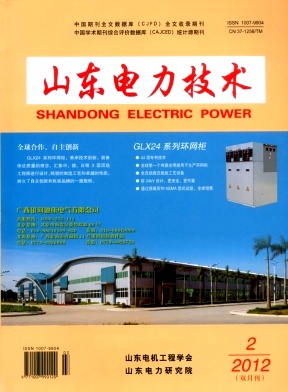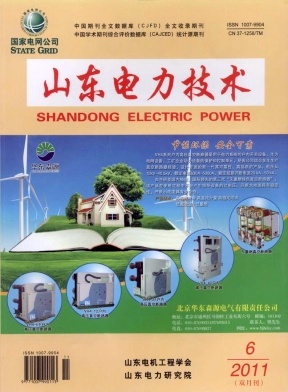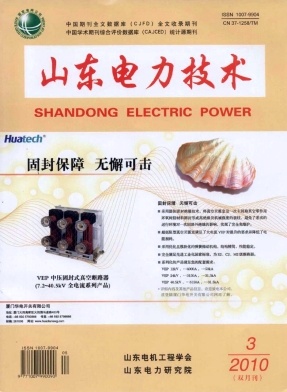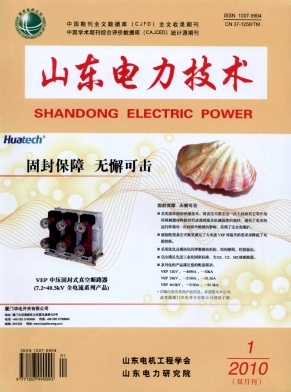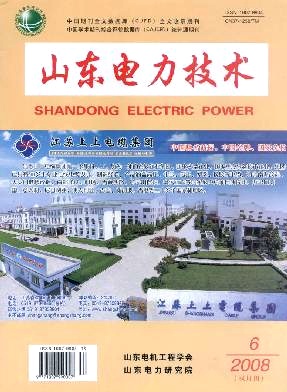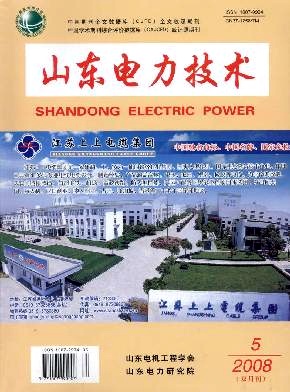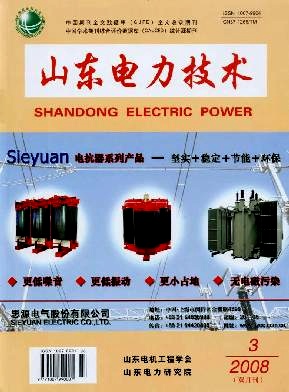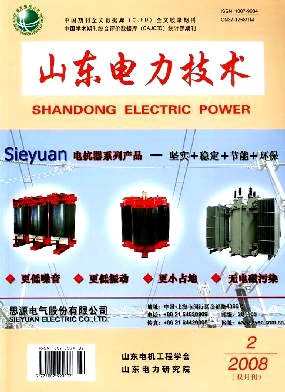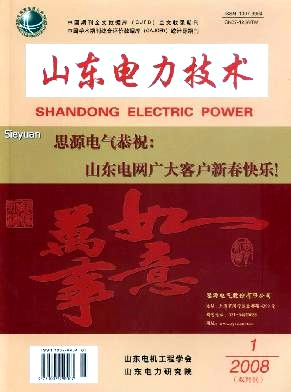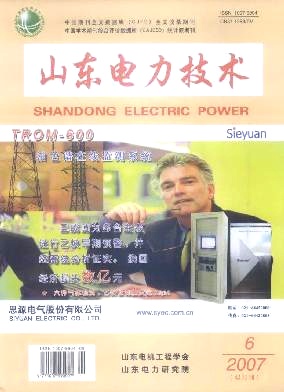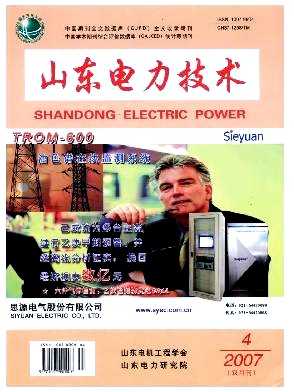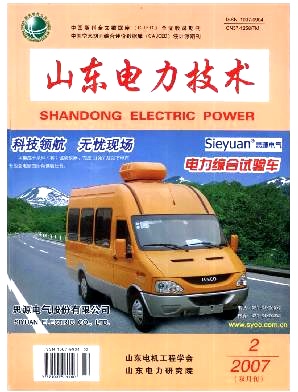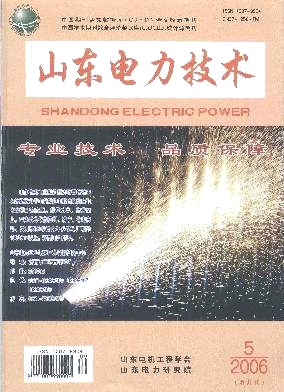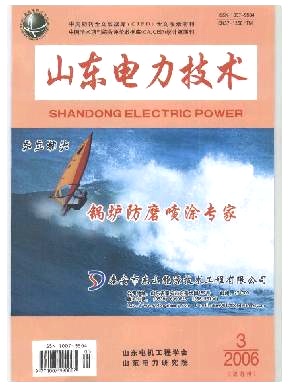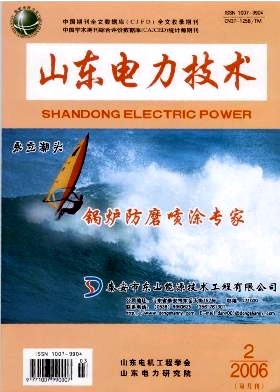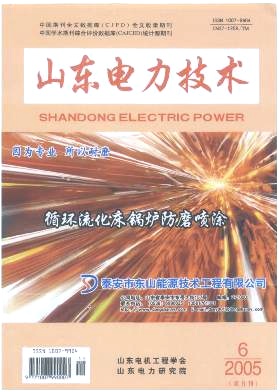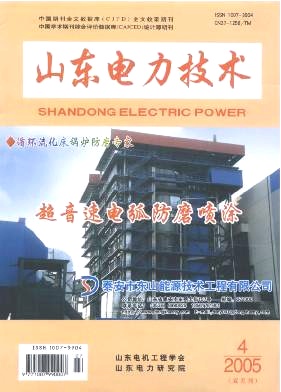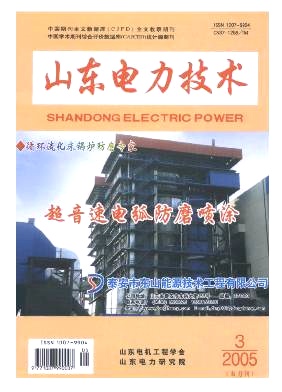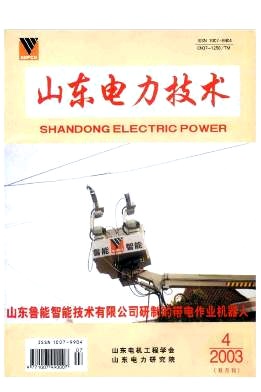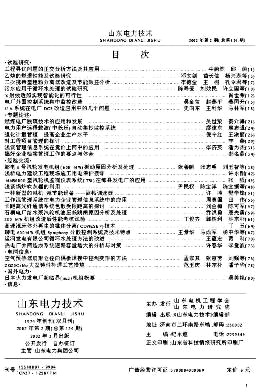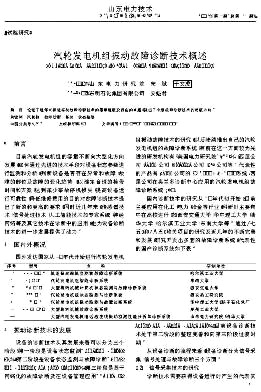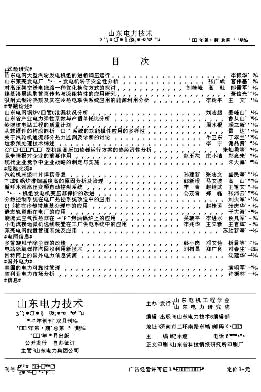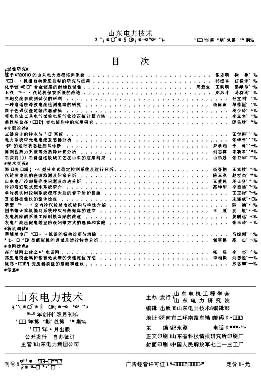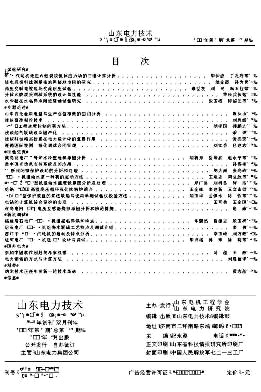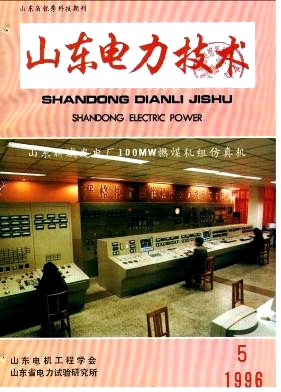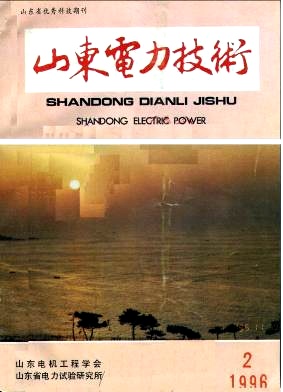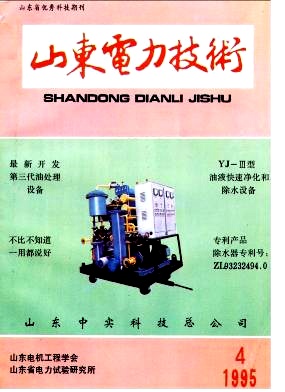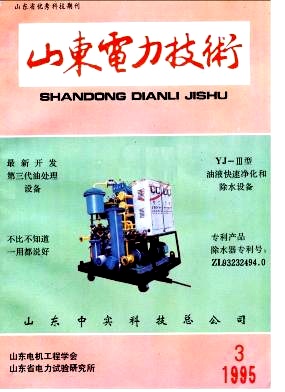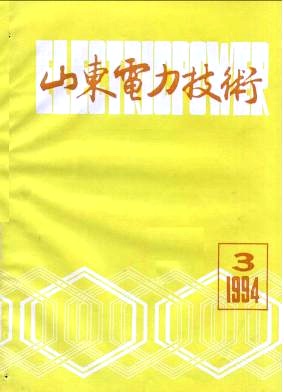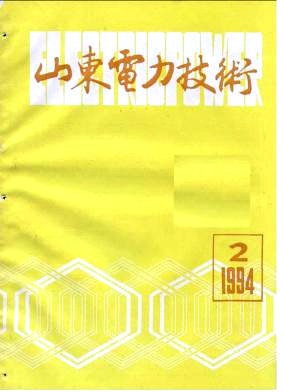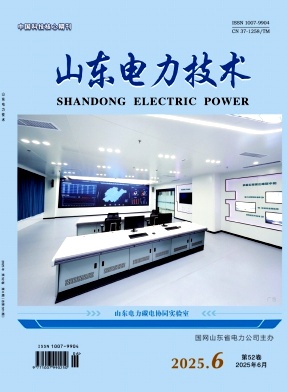
News
Call for Papers - Optimization, regulation, and intelligent operation and maintenance of new energy generation systems
2024-11-25Call for Papers - High safety energy storage battery management technology
2024-11-25Call for Papers - Electric Power Vision Technology and Application
2024-11-25Outstanding Reviewers of the Journal in 2023
2024-11-25Excellent Papers of the Journal in 2023
more..Frequency Regulation Method for Off-grid Virtual Synchronous Generators Based on Linear Active Disturbance Rejection Control
DING Hongzhi;PAN Bo;GUO Xiaorui;WEN An;YE Run;Huzhou University;State Grid Zhejiang Anji County Power Supply Company;To address the frequency fluctuation issue caused by load mutations in the offline mode of virtual synchronous generators(VSG)and the insufficient dynamic response of traditional proportional-integral(PI)control,this paper proposes a VSG secondary frequency regulation strategy based on linear active disturbance rejection control(LADRC). First,the mathematical model of the off-grid VSG is established,and a LADRC-based frequency control scheme is designed.Its core employs a linear extended state observer(LESO)to observe and estimate the total system disturbances in real time,achieving dynamic compensation through linear state error feedback(LSEF).Finally,a simulation model is built on the Matlab/Simulink platform to conduct comparative analysis of the frequency regulation performance of PI control and LADRC under different load mutation scenarios.The simulation results demonstrate that,compared to traditional PI control,LADRC exhibits superior anti-disturbance capability and faster dynamic response speed,significantly reducing frequency fluctuations and enhancing the dynamic stability characteristics of microgrid frequency.Notably,it maintains stable control performance even under multiple continuous load disturbances. The research results provide a theoretical basis and technical reference for optimizing the frequency control strategy of off-grid VSGs,offering practical application value for improving the stability of microgrids or independent power systems.
Multi-source Collaborative Scheduling Method for Islanded Microgrids Considering Converter Frequency Support and Capacity Constraints
DENG Meiling;JIANG Tongcai;BAI Zhenyi;LIN Jian;CHEN Yongjin;WU Zilong;In response to the challenge posed by the high proportion of new energy intensity uncertainty within island microgrids,which can lead to significant frequency fluctuations and exceed the boundary threshold in extreme cases,thereby triggering the protective action of power grid devices and endangering the security and stability of the power grid,we propose a multi-source collaborative scheduling method for islanded microgrids. This method considers converter frequency support and capacity constraints. Firstly,a dynamic frequency response model for the islanded microgrid with multi-source participation(wind,photovoltaic,hydro,and storage)in dynamic frequency support is established.This model includes the system′s multi-source power-frequency time-domain expression and dynamic frequency safety constraints. Secondly,the relationship between the capacity limitations of converter and the demands for active frequency modulation and reactive voltage regulation is discussed.A dynamic frequency support strategy based on the remaining available capacity of inverters is proposed.With dual optimization objectives of system operational economy and frequency-voltage security,and considering constraints such as dynamic frequency and voltage safety,an optimal dispatch method for islanded microgrids is proposed,incorporating coordinated frequency and voltage regulation by wind,photovoltaic,hydro,and storage. Finally,simulation results based on an improved IEEE 33-node system validate the effectiveness of the proposed method in enhancing the frequency and voltage stability of islanded microgrids under large disturbances and uncertainties.
Optimal Method for Joint Configuration of Photovoltaic Storage Systems Under Multi-stakeholder Interaction
FENG Depin;XU Bing;SHEN Tao;MA Xiaohui;State Grid Linyi Power Supply Company;To address the challenge faced by existing developers in distributed photovoltaic and storage planning,specifically the difficulty in adequately considering the impacts of network reconfiguration,storage operation strategies,and active power reduction on the configuration results of optical storage under the drive of different stakeholders,an optimization method for the joint configuration of photovoltaic and storage systems under multi-stakeholder interaction is proposed. First,a joint configuration framework is constructed under the interaction between developers and distribution network operators(DNO),revealing the decision variables and interaction mechanisms of each stakeholder. Secondly,a joint configuration model for photovoltaic and storage systems under the interaction between developers and DNO is established.In the developer planning stage,the distributed photovoltaic capacity and storage capacity are determined by maximizing the developer′s annual investment and operational revenue.In the developer operation stage,the storage operation strategy is decided by maximizing the developer′s annual operational revenue.In the DNO operation stage,the network reconfiguration,active power curtailment,and power purchase and sale with developers and the upstream grid are decided by maximizing the supply revenue.Then,the planning and operation models of developers are coupled,and the KKT(Karush-Kuhn-Tucker)conditions and the big-M method are used to transform the developer′s planning and operation models into constraints of the DNO model for solution.Finally,the effectiveness and economic feasibility of the proposed photovoltaic storage joint configuration method are validated through a case study in a specific region.
Sliding Mode Control of Grid-forming PV-storage System Based on Reduced-order High Gain Observer
XUE Ruize;LI Xing;WANG Jiali;REN Junheng;HUANG Jinfeng;Aiming at the problem that the DC bus voltage fluctuation will be caused by the power change of new energy equipment,and the active power may produce power oscillation under the weak power network environment with large frequency fluctuation of the power grid,thus worsening the transient performance of the grid-type optical storage system,based on the virtual synchronous generator technology,a novel terminal complementary sliding mode control(NTCSMC)strategy based on the reduced-order high gain observer(RHGO)is proposed.Firstly,a high gain coefficient is introduced into the observer to suppress transient oscillations,and the structure of the observer is simplified by a reduced-order design.Secondly,the control coefficient is introduced on the terminal complementary sliding mode surface to enhance the stability of the controlled system,and the superhelical switching law is designed to suppress buffeting.Then,the stability of RHGO and NTCSMC is proved theoretically.Finally,proportional integral(PI)control,traditional extended state observer-sliding mode control(ESO-SMC),and improved ESO-SMC control methods are simulated and verified by experiments on MATLAB simulation and experiment platform. The results show that the proposed control method has a good effect on the transient performance of grid-connected photovoltaic energy storage systems.
Harmonic Detection Algorithm Based on Second-order Hybrid Convolutional Window Bispectral Line Interpolation
LONG Yanping;In harmonic analysis of power system,spectrum leakage and fence effect pose significant challenges to the accuracy of signal detection.In order to effectively reduce the influence of spectrum leakage and fence effect on harmonic detection,a second-order hybrid convolution window bispectral interpolation algorithm based on Hanning window and five-term Maximumsidelobe-decay(MSD)window is constructed. The algorithm not only ensures that the width of the main lobe meets the requirements,but also significantly improves the sidelobe characteristics,and the bispectral interpolation algorithm can detect the amplitude,phase and frequency of complex harmonic signals more accurately.The simulation analysis of complex harmonic signals shows that the proposed method has higher detection accuracy and stability when dealing with complex harmonic signals,especially in the presence of white noise interference.
Research Status Review of Robots Applied in Substations for Equipment Inspection
Yang Xudong;Huang Yuzhu;Li Jigang;Li Li;Li Beidou;Inner Mongolia Power(Group)Co.,LTD Baotou Power Supply Bureau;Shandong Luneng Intelligence Technology Co.,LTD;T he substation inspection robot is an intelligent robot with infrared and visible camera to inspect and analyze the condition of the equipment instead of people.There are many countries have been study on the robotics technology,including Japan,China,Canada and Brazil.We introduce the technology research status and the generalization of the robot applied in the substation.
[Downloads: 4,366 ] [Citations: 290 ] [Reads: 52 ] HTML PDF Cite this article
Research on Fuzzy PID Control Method Combined Fuzzy Theory and Conventional PID Control
Fuzzy control and PID control are often used in industrial control area.However,a single fuzzy control or PID control can not satisfy the need of the rising complexity and precision of control systems.This paper deeply analyzed the advantages and the disadvantages of fuzzy control and PID control,and proposed a new fuzzy PID control combined fuzzy control and PID control.The simulation results show that the proposed method can effectively reduce the overshoot of the control system,accelerate the response speed,and shorten the adjustment time,thus,the method can enhance the dynamic performance of the control systems.
[Downloads: 3,883 ] [Citations: 168 ] [Reads: 61 ] HTML PDF Cite this article
Applying Unmanned Autonomous Helicopter to Transmission Line Inspection
With the rapid extention of the electric distribution network,the workload of the inspection of transmission lines increases dramatically.Unmanned helicopters,a kind of unmanned aerial vehicle(UAV),can be applied to transmission line inspection to improve the efficiency This paper introduces and discusses the some techniques of applying an unmanned helicopter to transmission line inspection.The main inspection tools are visible light camera and infeared camera.The inspection targets include tansmission lines,jumper conductor,isulator,damper,clamper,tower,hardware fittings,etc.The aim of inspection is to find any device damages,hardware fitting missing and thermal defects.This paper also introduces the unmanned helicopter and the carried inspection system and perspect the further applications of unmanned helicopters in power industry.
[Downloads: 1,310 ] [Citations: 162 ] [Reads: 70 ] HTML PDF Cite this article
Study on Performance and Application of Lithium Iron Phosphat Battery
Zhang Song,Ding Guangqian,Hu Tiejun,et alThe lithium iron phosphate(LiFePO4) battery has advantages of high voltage,energy density,long service life,safety performance,low self-discharge rate and no memory effect.This paper introduced the structure of LiFePO4 battery,the principle of charging and discharging.It introduced the structure of LiFePO4 battery energy storage system and discussed the principle of energy conversion system.It also studied the applications of LiFePO4 battery which is widely used in stable supply of renewable energy such as wind power,solar power,peak load shifting,electric vehicles,distributed power and uninterruptible power supply.
[Downloads: 3,788 ] [Citations: 92 ] [Reads: 60 ] HTML PDF Cite this article
Study on Power Quality and its Measurement
The basic situation of power quality is briefly reviewed.The necessity to detect and measure the power quality is discussed.The detecting items and basic hardware requirements are listed.Some feasible detecting methods are presented.
Review of Load Flow Calculation Methods in Power Systems
The load flow calculation is one of the most commonly used tools in power system engineering. This paper presents a summary of the load flow calculation. At first, a brief review of the development of load flow calculation is given; and secondly, a variety of algorithms for load flow calculation are mentioned, with their principles introduced and merits & defaults compared. The problems at present and the prospect of future are discussed in the end.
Research Status Review of Robots Applied in Substations for Equipment Inspection
Yang Xudong;Huang Yuzhu;Li Jigang;Li Li;Li Beidou;Inner Mongolia Power(Group)Co.,LTD Baotou Power Supply Bureau;Shandong Luneng Intelligence Technology Co.,LTD;T he substation inspection robot is an intelligent robot with infrared and visible camera to inspect and analyze the condition of the equipment instead of people.There are many countries have been study on the robotics technology,including Japan,China,Canada and Brazil.We introduce the technology research status and the generalization of the robot applied in the substation.
[Downloads: 4,366 ] [Citations: 290 ] [Reads: 52 ] HTML PDF Cite this article
Research on Fuzzy PID Control Method Combined Fuzzy Theory and Conventional PID Control
Fuzzy control and PID control are often used in industrial control area.However,a single fuzzy control or PID control can not satisfy the need of the rising complexity and precision of control systems.This paper deeply analyzed the advantages and the disadvantages of fuzzy control and PID control,and proposed a new fuzzy PID control combined fuzzy control and PID control.The simulation results show that the proposed method can effectively reduce the overshoot of the control system,accelerate the response speed,and shorten the adjustment time,thus,the method can enhance the dynamic performance of the control systems.
[Downloads: 3,883 ] [Citations: 168 ] [Reads: 61 ] HTML PDF Cite this article
Study on Performance and Application of Lithium Iron Phosphat Battery
Zhang Song,Ding Guangqian,Hu Tiejun,et alThe lithium iron phosphate(LiFePO4) battery has advantages of high voltage,energy density,long service life,safety performance,low self-discharge rate and no memory effect.This paper introduced the structure of LiFePO4 battery,the principle of charging and discharging.It introduced the structure of LiFePO4 battery energy storage system and discussed the principle of energy conversion system.It also studied the applications of LiFePO4 battery which is widely used in stable supply of renewable energy such as wind power,solar power,peak load shifting,electric vehicles,distributed power and uninterruptible power supply.
[Downloads: 3,788 ] [Citations: 92 ] [Reads: 60 ] HTML PDF Cite this article
Progress in Synthesis and Application of Perovskite Photovoltaic Materials
CHENG Fang;Photovoltaic power generation has significant energy,environmental and economic benefits,and can significantly reduce carbon emissions.It will become the main source of global energy supply in the future.With the gradual improvement of society's awareness of energy greening and the advancement of chemical synthesis technology,the research and development of high photoelectric conversion efficiency solar cells has become a current research hotspot. Among them,perovskite(ABX3)materials have become one of the most promising materials for new-generation solar cells due to their high photoelectric conversion efficiency,low cost,and strong optical tunability.The principle and development status of perovskite solar cells was introduced. Then,the technical advantages and development prospects of different types of solar cells from the perspective of different chemical compositions were analyzed and compared,including organic-inorganic hybrid perovskite solar cells,inorganic perovskite solar cells,nanoscale inorganic perovskite materials and other types of solar cell materials,which provide a reference for the next step in the development of perovskite high conversion efficiency photovoltaic materials synthesis technology.
Tracking the information about your manuscript
Communicate with the editorial office
Query manuscript payment status Reviewers LoginCollecting, editing, reviewing and other affairs offices
Managing manuscripts
Managing author information and external review Expert Information Authors LoginOnline Review
Online Communication with the Editorial Department
